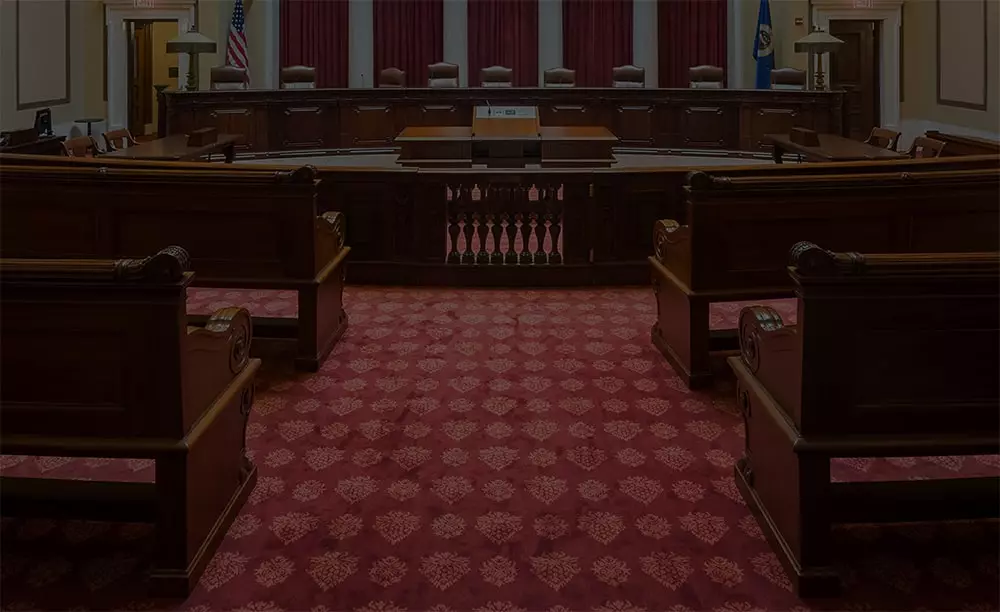
Downward departure occurs when a judge imposes a sentence below the guideline range due to mitigating factors. This allows flexibility in sentencing and recognizes that guidelines may not cover all circumstances.
If you face a conviction for a felony offense, you may worry about sentencing requirements.
Minnesota uses a formula known as sentencing guidelines to determine recommended sentences for felony crimes. Guideline sentences are not mandatory, but they are presumptive.
While a judge is supposed to follow the guidelines, you still have options for a lighter sentence. In some cases, a judge can use discretion to reduce the severity level of your conviction.
This concept, called downward departure, occurs when a federal judge gives a defendant a sentence that is less severe than the minimum sentence recommended by the sentencing guidelines.
The judge may have many reasons for a downward departure, such as a first-time offense or extenuating circumstances. A good criminal defense attorney attempts to persuade a judge to use lighter sentencing.
If you think lighter sentencing should apply to your case, you may ask, “What is a downward departure?”
To understand legal options for Minnesota sentencing, you should know a few things about a downward departure.
Here, we will discuss the following to help you gain a better understanding of downward departure:
- What are Minnesota sentencing guidelines?
- What sentencing factors does a judge consider?
- Why would a judge choose to grant a downward departure?
Hear it From an Expert – John Arechigo – 2019 Attorney of the Year

John Arechigo, a practicing criminal defense attorney in St. Paul, explains what you should know about downwards departures.
Recently, John Arechigo was named the 2019 Attorney of the Year by Minnesota Lawyer.
He sheds some useful insight based on his years of experience within the criminal defense.
So, before deciding to hire any criminal defense attorney to consider if you are hiring an attorney with the experience you need to get the court ruling you deserve.
Q: Can you describe your experience and a few examples/results dealing with downward departures?
Q: Based on your experience, what can you tell readers about dispositional departures?
Q: Based on your experience, what can you tell readers about durational departures?
Q: How many cases have you handled dealing with defense departures?
Q: You mentioned that there are separate factors that go into each departure argument, can you briefly speak to that and describe your successes?
Q: Can you please provide any other information that you feel your readers would like to know?
What Are Minnesota Sentencing Guidelines?
Sentencing guidelines are common across the United States. As lawmakers realized some offenders received unfair sentences, they began writing sentencing guidelines. These guidelines give a judge suggested or mandatory sentences for each crime.
Minnesota Sentencing Guidelines first went into effect in 1980 and continue to be revised and renewed. The latest guidelines went into effect in August of 2019.
The sentencing guidelines seek to promote consistent sentencing and public safety while reducing judicial bias factors.
Different Minnesota Sentencing Guidelines are used for “standard” offenses, sex offenses, and drug offenses and outline minimum and maximum sentences using a grid system that accounts for a person’s prior criminal history and the severity of the current sentencing offense.
The sentencing guidelines are advisory to the court, meaning they are not mandatory. The guidelines allow a judge to depart from suggested sentencing when “substantial and compelling circumstances” arise.
It is a criminal defense attorney’s job to effectively convince a judge that such compelling circumstances apply to your case.
What Sentencing Factors Does a Judge Consider?
Downward departure means an offender receives a more lenient sentence than the Minnesota Sentencing Guidelines recommend.
Judges consider the following factors before allowing a downward departure sentence.
- Public safety. This is the primary factor in downward departure sentencing. A judge wants to protect the public from crime.
- Retribution. This sentencing element punishes the offender for their crime. The severity of the retribution should be proportional to the seriousness of the offense and the offender’s prior criminal record.
- Incapacitation. This sentencing goal takes away an offender’s ability to commit future crimes by keeping the offender in prison.
- Deterrence. This element attempts to deter criminal behavior by the threat of harsh sentencing. In theory, if a judgment is too light it may not deter people from committing additional crimes in the future.
- Restitution. This objective tries to pay the victim or society back for the harm done. Restitution comes in three forms: monetary, community service, and service to victims. Offenders with short criminal histories who committed non-violent crimes might be eligible for restitution, like community service.
- Rehabilitation. This goal seeks to reform the convicted individual in an effort to eliminate future offenses upon release from prison. Rehabilitation services include substance abuse, education, and mental health services. Some prisons may not have rehabilitation services. The absence of rehabilitation resources does not justify a longer prison sentence.
A judge balances these factors when determining whether a downward departure is appropriate for an offender.
Why Would a Judge Choose Downward Departure?
A judge can depart from suggested sentencing grids in two ways:
- Aggravated Durational Departure. This occurs when a judge orders a sentence at least 20 percent higher than the sentence in the grid.
- Mitigated Durational Departure. This occurs when the court orders a sentence that is more than 15 percent lower than that suggested on the grid.
Your criminal defense attorney will argue for substantial and compelling circumstances that necessitate a mitigated durational departure.
This is a significant downward departure. This means your sentence will become at least 15 percent lighter than sentencing guidelines suggest.
A plea bargain is a form of a downward departure.
A plea bargain involves a defendant pleading guilty for a lesser charge in exchange for a lighter sentence. This moves the case through the court quickly and spares a defendant from facing a maximum sentence.
Another situation that may invite downward departure sentences is when a defendant cooperates with the prosecuting attorney.
This could mean that the defendant provides information that helps the prosecution with their case.
The defendant could assist with the current case or another case, causing the prosecution to request a downward departure sentence.
A judge may also consider reasons for a downward departure in these situations:
- The defendant was an accomplice to the crime.
- The defendant didn’t understand the criminal nature of the act.
- The defendant has a mental disorder that requires specialized treatment.
- The victim initiated or provoked the crime.
- The defendant committed the crime under duress.
- The defendant was too young to understand the consequences of criminal behavior.
- The need for restitution to the victim is greater than the need for prison time.
After applying a downward departure sentence, the judge completes a departure report explaining why the downward departure was applied. (Minn. R. Crim. P. 27.03, subd. 4(c)).
Ask Arechigo & Stokka About Downward Departure Sentencing
If you have questions about downward departure and whether it might apply to your offense, call Arechigo & Stokka for legal advice. The criminal defense attorneys at Arechigo & Stokka have decades of experience defending Minnesota clients.
Call for a complimentary consultation and learn the best defense for your case as well as possible reasons for a downward departure. Arechigo & Stokka have the courtroom experience, compassion, and courage your case deserves.
They will advocate for your best legal option, whether that’s acquittal or downward departure.



